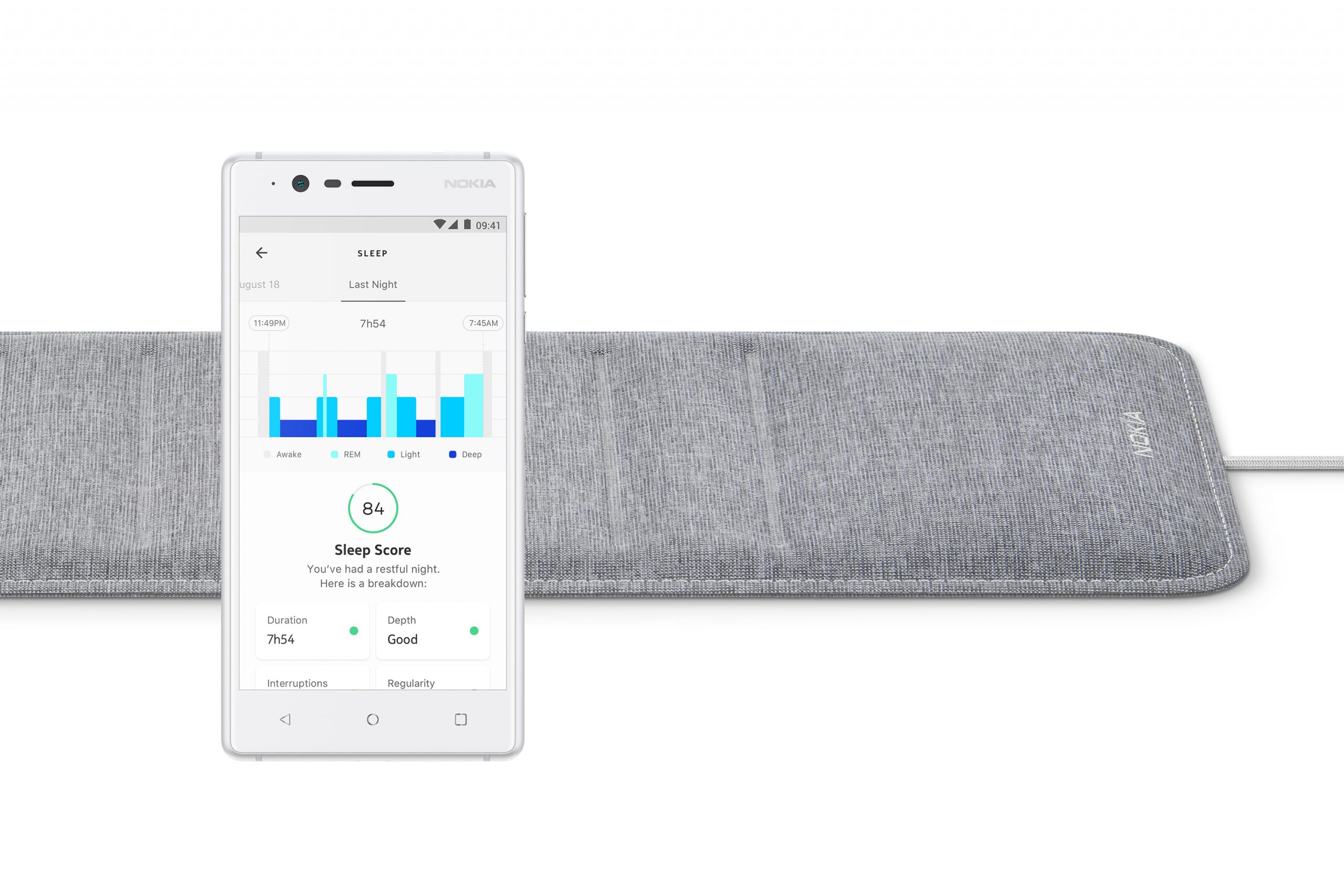
What can going to bed tell you about your overall health? A lot, thanks to a new metric plus related in-app advice. Read on to learn more.
At Withings, we believe that advanced sleep tracking is key to having an in-depth look at your nights, so you can improve them, and then reap the benefits of better sleep on your overall health. Today we’re releasing a new free Sleep Heart Rate indicator for our devices that track heart rate—Steel HR, Steel HR Sport, Pulse HR & Sleep, and this feature is now directly integrated into the Health Mate app. With this update, you can now dive into more complete sleep graphs and navigate through standard heart rate zones. See how your lifestyle impacts your cardiovascular health and overall physical fitness, and find out how to make choices that will help you lower your Sleep Heart Rate with the help of rich in-app content.
What is Sleep Heart Rate?
Sleep Heart Rate is your average heart rate during sleep. It is correlated with your resting heart rate, which is, on average, 10% higher than your Sleep Heart Rate.
- Sleep HR is lower during deep sleep, which occurs during the first half of the night.
- Sleep HR is higher and more variable during REM sleep, which usually occurs during the second half of the night. Why? REM stands for Rapid Eye Movement, and is due to intense brain activity related to dreams, which happen during this sleep stage.
Why does Sleep Heart Rate matter?
Sleep Heart Rate is a good indicator of your overall health. Multiple studies have shown that a low resting heart rate can indicate good overall health and physical fitness. In some cases, having a high resting heart rate could mean having an increased risk of developing cardiovascular disease, because the heart needs to beat more often, and an elevated rate can impair its overall function.Your resting heart rate is highly correlated with your sleep heart rate. Your sleep heart rate is typically about 0.9 times your resting heart rate. For adults, a normal resting heart rate ranges from 60 to 100 beats per minute, but this number may be lower for athletes. A sudden increase in your sleep heart rate is commonly caused by lifestyle factors, but it could also be a sign of illness, such as a viral infection.
So what should you aim for? The lower, the better! A strong and healthy heart works less hard to circulate oxygen-rich blood to your body’s organs and muscles.
Lowering your Sleep Heart Rate
Many lifestyle factors can affect your Sleep Heart Rate—some have a short-term effect, and others have a long-term effect. Articles provided in the Health Mate app can show you how to take control of your heart health.
What do I need to do to get this new indicator?
First, make sure your app is up to date. Check that you have Health Mate version 4.8 or later. Then all you need to do is sleep! You’ll wake to find all data and related content in the app.
Are the Sleep Heart Rate graphs the same in both the Withings trackers and Sleep Analyzer, the Withings sleep tracking mat?
Short answer: not exactly. Long answer:
Our range of HR trackers monitor heart rate every 10 minutes, unless you’re launching a workout session with continuous heart rate—which you’re not supposed to do at night.
But our sleep tracking mat, Sleep Analyzer, continuously tracks heart rate, and then uses this heart rate measure to make averages on the minute level, and thus delivers highly-accurate heart rate measures (the gold standard for HR sleep tracking). Therefore, your Sleep Heart Rate graph will be more detailed and more precise if you use Sleep.
We hope you enjoy taking advantage of the new Sleep Heart Rate indicator, designed to give you a new tool to help monitor and improve your overall cardiovascular health.



